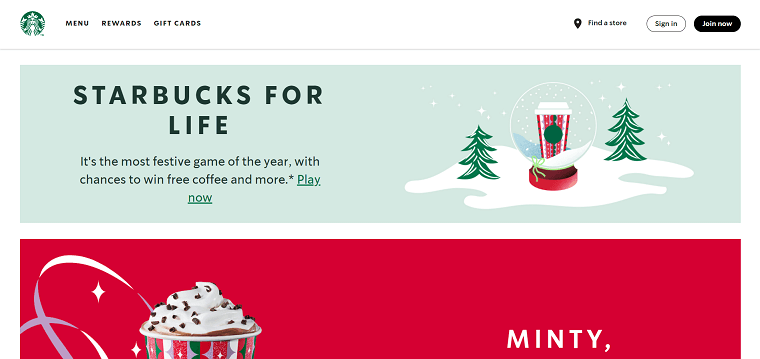How to Do Product Positioning for Online Business? Best Strategies & Examples 2022

While you are working on your product, you may find it hard to imagine how it will be received once it is released. The purpose of a product positioning strategy is to plan how the market will perceive your product.
Even though we say the product has a position, the reality is that your product has its own life. It is your customers' opinions that matter in terms of product positioning. Your product does not occupy that position if a customer is not thinking about it.
What Is Product Positioning
Positioning your product as a benefit to a specific target audience is a form of marketing. Based on favorable responses to a product, market researchers and focus groups can help marketers identify which audience to target.
The benefits of a product can also be determined through research. These metrics can be used to streamline marketing campaigns and develop effective marketing messages that increase sales and leads. They also assist in differentiating products and services from their competitors.

Any marketing plan should include product positioning, but it doesn't have to target just one audience. It is possible, for instance, for a product to have the main target audience and a minor audience that is also interested in the product but possibly in a distinctive way.
Marketing messages must focus on the advantages each target audience values most since each audience will be attracted to the product for different reasons.
The Importance of Product Positioning
Brands need to know their customers in order to develop products that resonate with them. It is possible to identify the benefits of this product for consumers if a well-planned strategy is developed.
To create a specific image of a brand and its products in the minds of consumers, marketing professionals identify the key benefits of a particular product in comparison with competitors' alternatives.
| Get Started Now to Grow Your Online Business with the Best AliExpress Dropshipping Tool - DSers! |
After that, the brand's target audience is made aware of the difference through the most effective communication channels. Marketing messages should be engaging.
Based on customer needs, competitor alternatives, the most effective communication channels, and tailored messages, marketers need to determine the best ways to present specific products and reach their target audiences.
By using product positioning strategies, companies can create messages that appeal to their customers' needs and wants and encourage them to buy.
Here are further reasons why product positioning is one of the most effective marketing strategies:
- Matching a product's benefits with customers' needs
- Maintaining a competitive advantage even as markets change
- Meeting the expectations of customers
- Promoting the brand's name and products
- Increasing customer loyalty
- Developing an effective promotional strategy
- Bringing in new customers
- Strengthening competitiveness
- Introducing new products
- Introducing new features of existing products
Types of Product Positioning Strategies
Positioning strategies come in many forms. Here are some examples:
· Benefits and attributes of the product: Connecting your brand/product to certain characteristics or beneficial properties
· Price of the product: Offering a competitive price for your brand/product
· Quality of the product: Establishing a good reputation for your brand/product
· Use and application of the product: Connecting your brand to a specific use
· Competition: Persuading consumers that your brand/product is superior to those of your competitors
Designing Your Product Positioning Strategy
Even though companies spend a lot of time developing products, few companies consider how consumers will perceive them once they are on the market.
To position products effectively, you need to understand how consumers think about them. For that reason, it's important to listen to your customers. Here are some key strategies that can help you establish the position of your product.
1. Positioning based on product attributes
A positioning strategy based on product characteristics or benefits connects your brand with a desirable characteristic. Toyota, for example, is known for its reliability, Porsche, for its performance, and Volvo, for its safety. Consumers are consistently informed of the unique feature or benefits of a brand's product.
2. Positioning based on pricing
A competitive pricing strategy involves establishing your company as a leader in the market. A brand can position itself as the one that offers the lowest prices for its products or services.
One example is supermarkets. Due to their lower shipping and distribution costs, high turnover, and large procurement of goods, they can afford to offer products for lower prices. Because of this, many consumers choose supermarkets with attractive prices without considering other choices.
As well as positioning based on price, brands can also position based on a gap they find in the market. You become your market's only option within a certain price range. It is not unusual for brands to expand their product lines to fill a market gap.
3. Positioning based on applications
Associating with a certain use or application can also help companies position themselves. Those who live a healthy lifestyle have a great need for gym products that help them perform better.
As a result, nutritional supplements are offered by many businesses. Most of these brands sell vitamins, minerals, and calories.
4. Positioning based on quality or prestige
Now we are discussing brands that don't focus on their price points, but rather high quality or prestige. A brand's reputation can sometimes attract customers. One example is Rolex.
Popular with powerful and wealthy people, this watch brand is associated with excellence in sport and achievement.
5. Positioning based on competitors
Differentiation by using competitors as a benchmark is referred to as competitor-based positioning. In their marketing, brands emphasize the key difference between their product/service and that of the competition to make it seem favorable and unique. It appears to be unique.
Brands can follow a similar strategy by using the competition as a reference. If a brand has a large share of the market, its positioning strategy must appeal to a broad audience.
Therefore, you offer a similar product with similar benefits at the same price point, so that they can convert some of their customers.
Examples of Product Positioning
1. Virgin Airways
Virgin Airways stands out for its innovative thinking. One of the first to offer in-flight internet access and movie screens, the brand is now planning to offer customers the possibility of space travel.

This legendary company is recognized as a responsible corporation because of its brand positioning.
2. Coca-Cola
Coca-Cola is a pioneer when it comes to product positioning. Since the company has survived for more than 125 years, it is no surprise that it has been so successful.

Brands have always tried to position themselves in the market based on the values of happiness, friendship, joy, and sharing. In turn, this has led to a greater level of consumer engagement, thereby encouraging them to share their happy memories and experiences.
3. Apple
This is Apple for you if you are looking for exclusivity, luxury, and elegance. It dominates the technology front, and in fact, other brands have used this positioning for their marketing campaigns. This can be seen in their products, services, and websites.
4. Starbucks
By focusing primarily on consumer experience, Starbucks has positioned itself well. The tradition of writing the client's name on the glass before serving the drink became part of this brand's culture.

Thousands of Facebook posts confirmed this. By focusing on the idea that buying coffee can be a pleasant experience, the brand was able to convey a simple message.
Mobile applications also allow users to place orders. This allows the customer to choose his coffee calmly and optimizes their time, which in turn reinforced and improved the brand positioning.
5. Dove
Dove enjoys a strong position among its competitors. Women are emphasized in all of its marketing campaigns. With its emotional focus, the brand was able to allow its audience to identify with and relate to the message.
One of the company's successful campaigns is the Real Beauty campaign. Women gave a portraitist a description of themselves.
When the portraitist described the women to someone the women knew, the latter appeared a lot prettier. Beautifully conveyed message in a sweet and meaningful way!
Conclusion
With mobile apps, brands can enhance their in-store marketing. Programs such as these provide in-the-moment awareness of products, enabling them to be used to introduce new offerings or stimulate interest in existing ones. Combining them with standard positioning strategies will increase their effectiveness.
Mobile marketing can boost traditional product positioning strategies. Consumers are more likely to make a purchase decision when brands use incentives, engaging content, and location-based messages.













 Company
Company
 Why Choose DSers
Why Choose DSers
 Blog
Blog
 Help Center
Help Center




 Live Chat
Live Chat